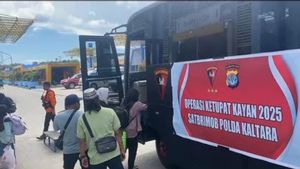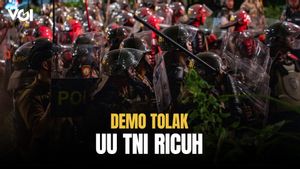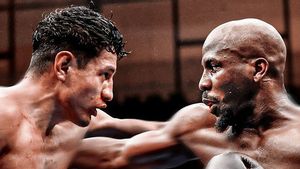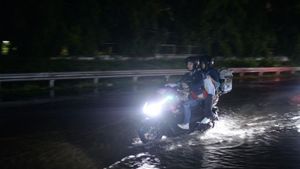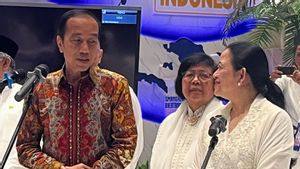JAKARTA - Many youth armies were formed and were at the forefront of the Masa Bersiap. In these chaotic times, the name of one of the National Heroes, Sutomo or Bung Tomo, was also mentioned. He was one of the troop leaders who were involved in the action. Apart from that, there was also the name Abdul Xarim MS. He was the leader of the revolutionary alliance that undermined the sultanate power in Sumatra in a cruel way.
The Bersiap period, or in Dutch is called Bersiap-tijd, is a dark and chaotic period in the history of Indonesian independence. After independence, precisely from mid-August 1945 to early 1946, there were frequent murders, rapes, and looting. The targets were Europeans and Dutch descendants. Also, some community groups that were considered pro-Dutch. Such as the Ambonese, the Minahasa ethnic, and the Chinese ethnic group.
In Surabaya, for example. During the Simpang Club violent tragedy, the group, that was mentioned as the perpetrator of the act, was the Indonesian People's Rebellion Front (BPRI). This army was founded by one of the heroes: Sutomo or better known as Bung Tomo.
According to the Lecturer at the Department of Social and Political Affairs of the Australian National University, Rosalind Hewett, she explained that the BPRI was an army that gathered European, Indo, Ambon, and Manado, both men and women at the Simpang Club (now Balai Pemuda). They were said to have interrogated, tortured, and killed hundreds of these people. Even according to an eye witness, Bung Tomo was present in the massacre there.

Bung Tomo, in his autobiography, admitted that he had visited the location. But, he claimed he only attended the Simpang Club once. He confessed that he was worried about the actions of the youths whose blood was hot. So, it was not impossible to slaughter the Dutch prisoners.
According to Rosalind Hewett, Bung Tomo's denial contradicted the story of other East Javanese youths who appointed him as a leader. "Indeed, it is taboo to discuss Sutomo's involvement during the Preparation Period. Especially since Sutomo is a national hero," said Hewett.
According to a historian, JJ Rizal, many factors caused the revolution in Surabaya to be hard to control. Mainly because of the Allied attitude that gave more space to the Dutch.
"And this is also the intention of the Dutch to create a chaotic situation. So, at the international level, there would be an image of uncivilization. Because Indonesia was controlled by a group of bandits to legitimize military action," Rizal said when contacted by VOI.
Rizal also explained that the chaos was because the people refused to return the Netherlands after independence. "There was an element of bandits because a critical situation rose from anarchy. But the biggest majority was in the great spirit of the struggle. The troop rejected the return of Dutch colonialism. Also, the cleansing of all the things that were associated with colonialism. It resulted in the destruction of these institutions. Especially government, and the disintegration of old values," he explained.
Another Actor
Similar massacres in Java also occurred in East Sumatra. The targets were members of the sultanate who were considered by pro-independence groups to be Dutch henchmen.
When Japan left the archipelago, there was a power vacuum in Indonesia. Although in Jakarta, Sukarno and Hatta had proclaimed independence on August 17, 1945. But, the news delivered to Sumatra in October 1945.
This situation was an opening for upheaval due to the absence of a single leadership. Both the sultan and the leaders of political organizations felt they had the right to be in control.
The leader of the organization felt that the feudal power of the sultanate was an obstacle to the course of the revolution. Slogans such as anti-colonialism, anti-feudalism, nationalism, patriotism, and democracy increasingly pushed for a social revolution. It was driven by the Unity of Struggle or Volksfront troops.
The alliance consisted of many organizations. Such as Gerindo, PKI, PARSI and PNI, and Barisan Harimau Liar. They then held a grand meeting on March 1, 1946. The meeting was also attended by M. Yunus Nasution, Marzuki Lubis together with Division IV TRI (Col. A. Tahir and Mahruzar) and Abdul Xarim MS who was the leader.
Xarim and Volksfront then gathered the strength of the youth. They were formed into a revolutionary weapon to remove the influence of sultanate officials who were considered to be hindering the revolutionary struggle.
Quoting Anthony Reid's writings in the People's Struggle: Revolution and the Destruction of the Kingdom in Sumatra, the actions of the revolutionary youth in shifting the influence of the sultanate were brutal. One of the events that became a dark record of the revolution occurred in Tanjung Balai Asahan on March 3, 1946.
That morning, the Volksfront mass led by Xarim had gathered after hearing the news that the Dutch were about to land at Tanjung Balai. But not long after that, they changed direction by besieging Sultan Asahan's Palace. They stormed the palace to demand responsibility for the deviance of the system that had been going on.
The mob went on a rampage. There was a strong hatred and desire for revenge against feudalism. It led to murder and kidnapping, and also other acts of violence that could no longer be prevented.
The violence resulted in the death of many of the aristocratic East Sumatra. In just a few days, the total number of victims from among the sultanate reached 140 people. In Tanjung Bali and Tanjung Pasir, almost all the nobles were killed.
Violence also occurred in Simalungun, the Great Sultanate of Deli Serdang and Difficulty Langkat. As a result of the rioting, the group of Barisan Harimau Liar killed King Pane and a poet Amir Hamzah.
Amir Hamzah's death can be said to be tragic. He was detained in a house on the banks of the Mencirim Binjai River for two weeks. After that, he was executed by beheading.
Apart from Hamzah, the victims of the Bersiap violence also happened to the two daughters of Sultan Langkat on March 9, 1946. They were raped by two Volksfront members, Marwan and Usman. Luckily, the rapists were caught and executed.
The English, Chinese, Japanese, Arabic, and French versions are automatically generated by the AI. So there may still be inaccuracies in translating, please always see Indonesian as our main language. (system supported by DigitalSiber.id)



